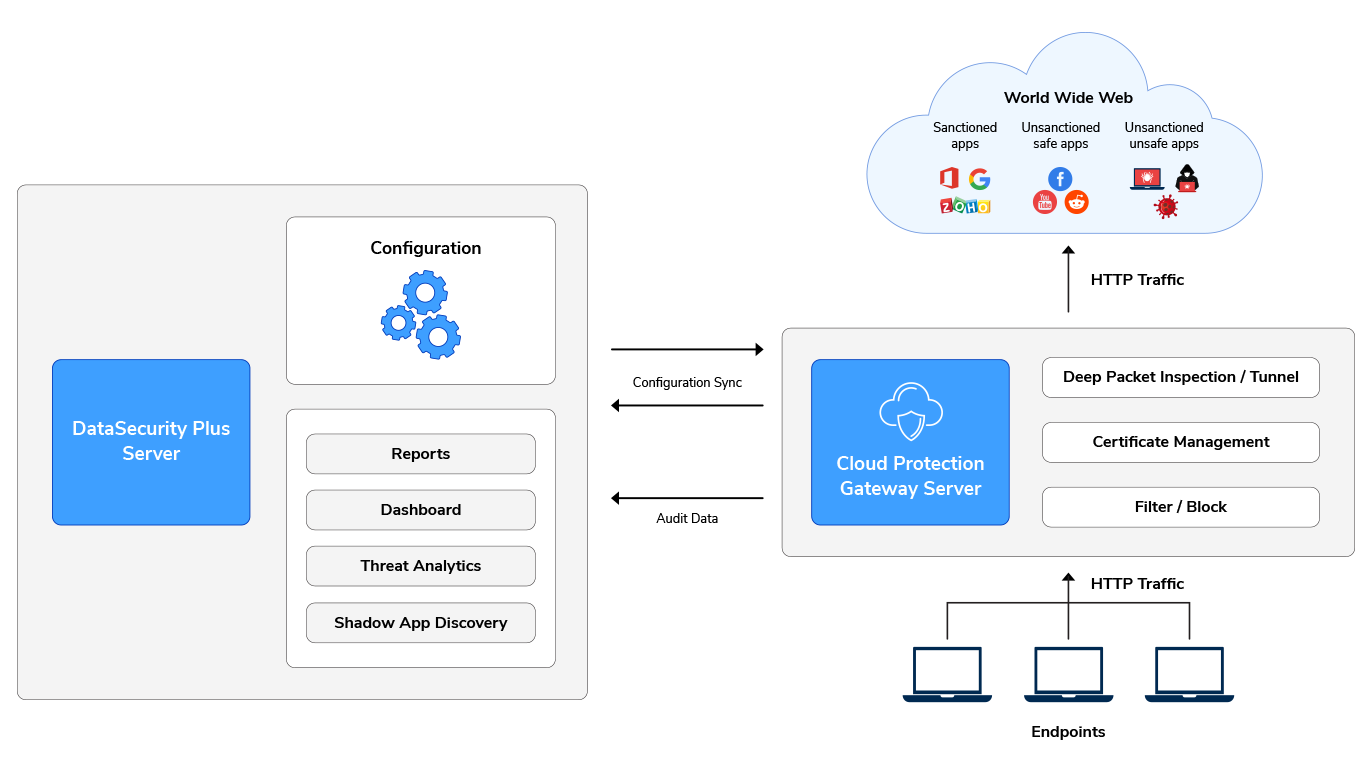Gateway Server Installation Steps

The gateway server acts as an intermediary between the endpoints and the internet, providing detailed insights on the web applications used within the organization by implementing data protection policies.
To configure gateway servers, go to Cloud Protection > Configuration > Server > Gateway Configuration and select the target gateway cluster from the Gateway Clusters panel. Then, click Add Gateway Server and follow the steps listed in the Cloud Protection Gateway Server Installation Wizard.
Step 1: Download and install a gateway server
- Click Download Cloud Protection Gateway Server to download and install the DataSecurity Plus Cloud Protection Gateway Server MSI file.
- During the installation of the gateway server, enter the access key and the DataSecurity Plus URL in the installation pop-up, and click OK.
- Once the installation is complete, the gateway server will communicate with the DataSecurity Plus server to sync configuration details.
Note: Windows is the only OS currently supported by DataSecurity Plus.
Step 2: Certificate configuration in endpoints
When deep packet inspection is enabled in the gateway server, CA certificates must be installed in the endpoint's trust store for the endpoints to trust the gateway server. For steps on how to create or update the existing CA certificate, refer to this page.
Step 3: Proxy configuration in endpoints
Configure a gateway server as a proxy in the endpoints to route network traffic from the endpoints through the configured gateway server to the internet. The proxy can be either configured manually on individual endpoints or on several endpoints via a Group Policy Object (GPO). For more information regarding proxy configuration, refer to this guide.
